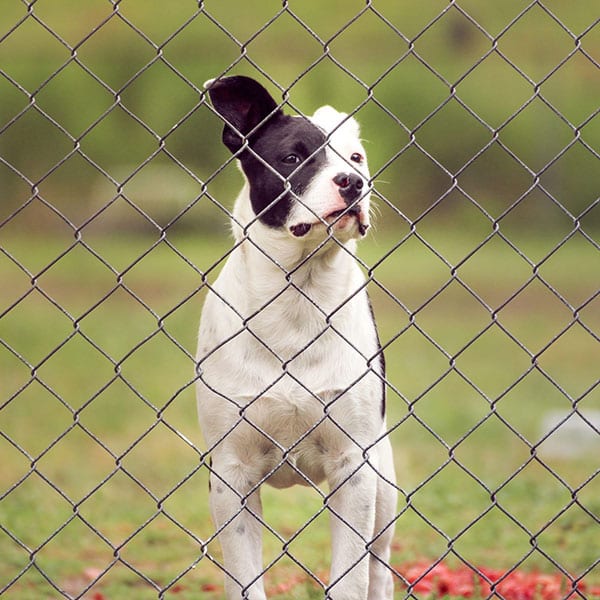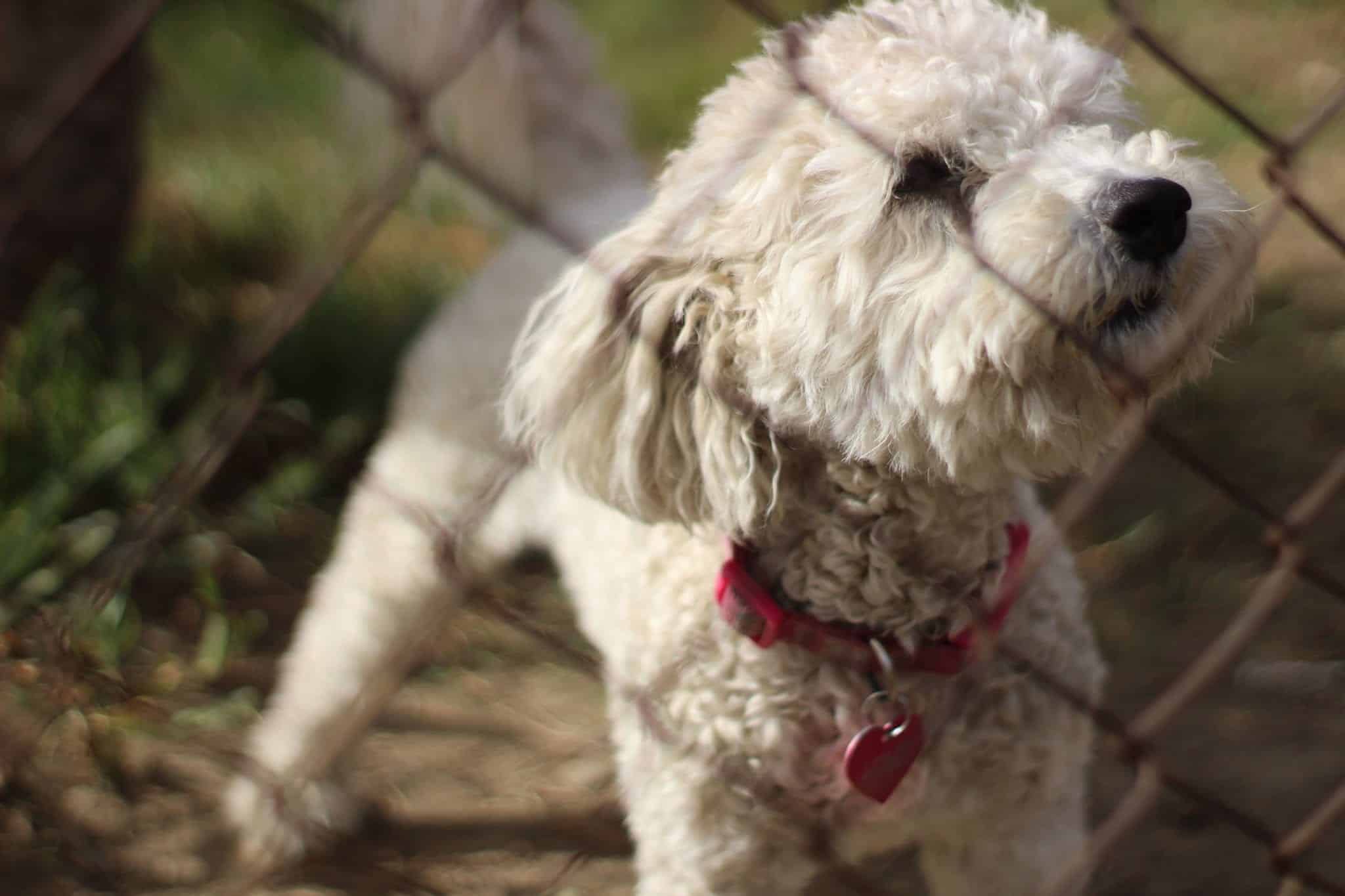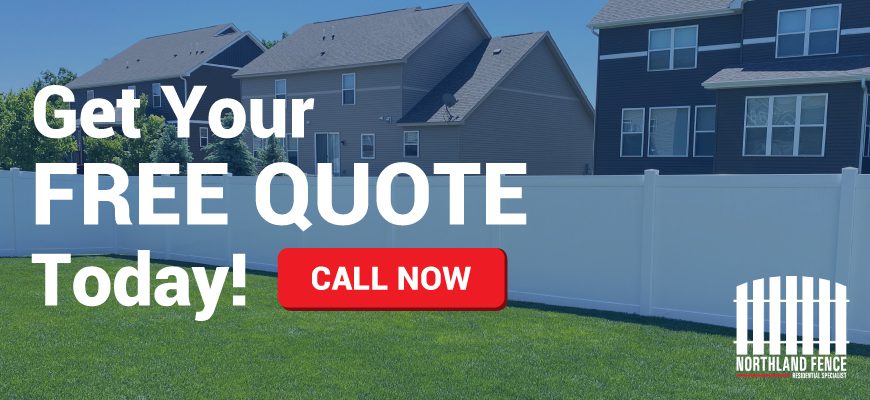You want your dog to play and enjoy your yard — but you also want them to be safe. Dogs love to play outdoors. They love to run around, explore, and get rid of pent up energy that may build up after being couped up in the house. That being said, you can’t just let your dog run loose. You need the right enclosure to ensure that your dog is safe and secure while they get some much deserved outside time.
How do you do this? You get the right fence. Choosing the right fence for your dog comes down to a few factors and considerations.
- Invisible vs. Traditional
- Privacy vs. Picket
- The size of your dog
The truth is that not all fences work for all dogs. That being said, there are definitely some fences that work for most if not all dogs, and some that may only work for your dog or your homeowner’s association. Building a fence can be a big project and you don’t want to do it twice. So, if you’re a dog owner and you’re thinking about installing an enclosure, take some of these risks to heart because you don’t want to install a fence twice. If you already own a fence, some of these are good tips and tricks to ensure the safety and security of your pup.
What Makes For A Good Dog Fence?
There are a lot of variables at play here that could potentially affect which type of fence is right for you. Does a fence comply with local laws? Does your homeowner’s association have any rules that may prohibit certain fence dimensions or styles? Are you in love with a specific style?
All of these may have an impact on what fence is a good fence for your dog. That being said, there is one option that stands above the rest. A privacy fence has long been toted as the best option for the safety and sanity of your pup. Why a privacy fence for your dog?
- Limiting their vision with a privacy fence reduces their urge to chase other animals like squirrels or birds
- You won’t have to worry about them barking at neighbor dogs
- Keep your dog safe from neighbors and your neighbors safe from your dog (better safe than sorry)
And better yet, a vinyl privacy fence offers a complete solution. Not only are these fences durable but also slick — which means your pup won’t be able to climb it. Big dogs are athletic and have a tendency to get creative when hurdling over a fence. Here’s how you can build the very best fence for your big dog.
Traditional Vs. Invisible
When it comes down to fence security risks, there’s often a big debate between traditional and invisible fences. We’ve actually written about this topic in detail, so if you want to know more about the pros and cons of traditional and invisible fences, check out that article. For now, we’ll give you a brief outline of what we covered.
Invisible Fences
These are an affordable solution for many dog owners. These are also great for those of you that have restrictions that may inhibit your ability to install a larger physical enclosure like a vinyl privacy fence.
The downside to these fences is that they may stop your dog from leaving the yard, but they can’t stop other dogs, animals, or people from coming in. You also need to be extremely mindful of the batteries in the collar. If the batteries die, the fence won’t be able to do its job and your dog may get out. Also, these collars do shock your dog. While it doesn’t necessarily physically hurt your pup, it can cause some behavioral issues, as your dog may associate curiosity, neighbors, or other dogs with a negative stimulus.
Traditional Fences
The pros of a traditional fence really come down to reliability. These enclosures have been around for a long, long time — and for good reason. When built well and installed properly, they work. Similarly to what we mentioned with privacy fencing, traditional physical fence come from the physical barrier they provide. You won’t have to worry about your dog being teased by the occasional squirrel or passing car. Also, if your neighbor, friend, or family member’s dog wants to play in the yard they can — without needing a collar of their own.
The disadvantages of a traditional fence are that they cost a bit more. They are also a bit more cumbersome to install. Also, your homeowner’s association or neighborhood may not allow certain fence types.
Security Risks For Your Dog

OK, now that we’ve covered what fences are best for your dog — it’s time to address some popular security risks that could make your fence obsolete.
The Wrong Fence
While we covered which fences are best for your pup, we didn’t necessarily speak about which ones are not. What exactly makes a fence, the “wrong fence.” Well, any fence that has the potential for footholds is a big no-no for your dog. This means chain link fences are out of the picture. Vinyl is your best option because of how smooth it is. Another problem we see all too often is that dog owners fail to account for how large their pup might get, and don’t build their fence high enough. To be safe, anywhere between 5-8 feet will keep almost any dog from finding their way to the other side.
Too Much Space
Dogs love to dig. If there is too much room between pickets or a large enough gap underneath the fence, they could get out. Just be mindful when installing your fence of any spaces, both in the fence and below. If you notice some potential problem areas, perhaps at certain slants or uneven areas — you can block the gaps with hardscaping or landscaping features.
Stepping Stones
While we don’t actually mean stones, it is common for dog owners to give their dogs the opportunity to step and climb their way over the fence. Be mindful of where you place planter beds, furniture, hose wheels — or anything else a dog could use to hoist themselves up and over your enclosure.
Damaged Or Weak Fence
The last potential security risk on our list is a weak or damaged fence. With dogs, fences go through a bit more wear and tear than normal. It’s important to keep an eye out for any weathering or damage so that your pup doesn’t have a chance to barrel through. If you’re wondering what you can do to keep your fence in tip-top shape — check out our All-Encompassing Guide To Fence Maintenance
Note: If your fence has a gate, it likely has a latch. Be on the lookout for faulty latches, or latch security in general. This is especially important if you have small children that may forget to secure the gate.
Need Help With Your Dog Fence?
While some handy homeowners like to take on their own fence installation, most do not. We’ve been a trusted Minnesota fence installation company for fifteen years — and we would love to help implement the perfect solution for your yard and your pup.
If you have any questions or want to get started with your own fence installation, contact us today.


